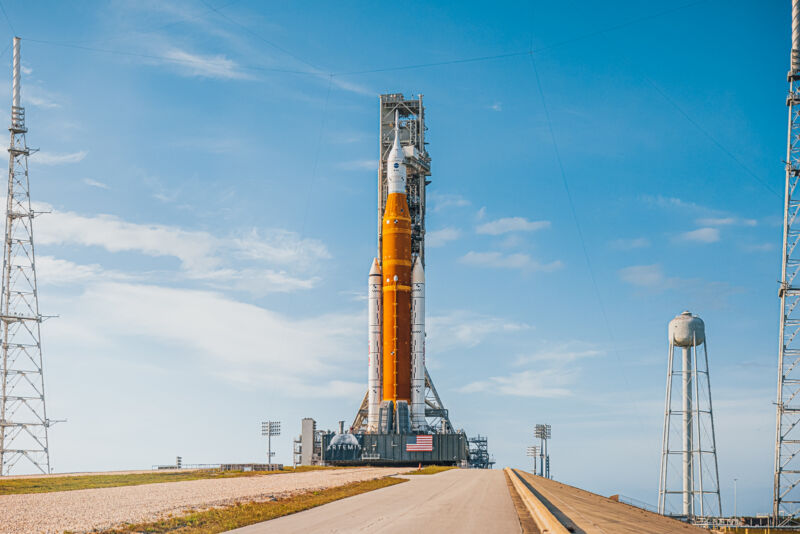NASA has published a list of potential launch dates for the Artemis I mission (see PDF), starting as early as July 26 and running through June of next year. During this time period, due to various constraints, the space agency has preliminarily identified 158 launch opportunities.
The Artemis I mission will encompass the debut launch for NASA's large Space Launch System rocket and the second orbital flight of its Orion spacecraft. Depending on when the uncrewed demonstration mission launches, it could last from 26 to 42 days as Orion flies into a distant retrograde orbit around the Moon.
In its news release, NASA helpfully explains the various constraints behind these dates, including orbital mechanics. For example, NASA says, "The resulting trajectory for a given day must ensure Orion is not in darkness for more than 90 minutes at a time so that the solar array wings can receive and convert sunlight to electricity and the spacecraft can maintain an optimal temperature range. Mission planners eliminate potential launch dates that would send Orion into extended eclipses during the flight."
These launch windows are subject to slight changes as mission planning is refined. However, the inclusion of dates through the first half of 2023 does raise an obvious question: Does NASA think the Artemis I mission—which was originally supposed to launch in 2016—could be delayed once again and slip into next year?
"The range of dates is not meant to convey anything about the probability of launching in 2022 or 2023," Kathryn Hambleton, a NASA spokeswoman, told Ars. "All launch dates more than about two months out are preliminary. It is standard for the team to have a preliminary outlook several months ahead. We’ll set a more specific target after we complete wet dress rehearsal testing."
If all goes well with final preparations before the Artemis I mission, it seems possible that NASA could launch in late August. NASA Administrator Bill Nelson appeared to confirm this during a US House subcommittee hearing on Tuesday when he said, "We're going to launch it in August."
However, an August launch remains speculative, with September or later this year being the more likely bet, considering the work NASA has left to complete.
During a call with the media on May 6, NASA's chief of human exploration, Jim Free, said the space agency wanted to roll the SLS rocket and Orion spacecraft out to the launch pad in late May and would target "early or mid" June for a wet dress rehearsal test. During this test, the rocket will be fully fueled and brought to within 10 seconds of engine ignition to work the pre-launch kinks out of the vehicle and its ground systems.
NASA has already attempted to complete this "wet dress" rehearsal three times this spring. Finally, engineers decided to roll the vehicle back to a hangar at Kennedy Space Center for modifications and repairs after the third attempt failed. So far, during these three tests, NASA has managed to load about half of the rocket's liquid oxygen and just a small fraction of the liquid hydrogen.
This week, NASASpaceflight.com reported that the space agency and its contractors continue to work on a number of issues encountered during the three previous attempts—particularly a leak in the purge line leading to the rocket's upper stage, known as the Interim Cryogenic Propulsion Stage. A NASA official said design modifications were likely to be needed.
Due to the ongoing nature of this work, it no longer seems likely that the large rocket will roll out of the Vehicle Assembly Building this month, which probably would push the start of the next wet dress attempt into late June at the earliest. Following a successful conclusion of this test, the rocket will still need to be rolled back to the assembly building to arm the flight termination system before it is finally wheeled back out to the launch site for a liftoff attempt.



3175x175(CURRENT).thumb.jpg.b05acc060982b36f5891ba728e6d953c.jpg)


Recommended Comments
There are no comments to display.
Join the conversation
You can post now and register later. If you have an account, sign in now to post with your account.
Note: Your post will require moderator approval before it will be visible.